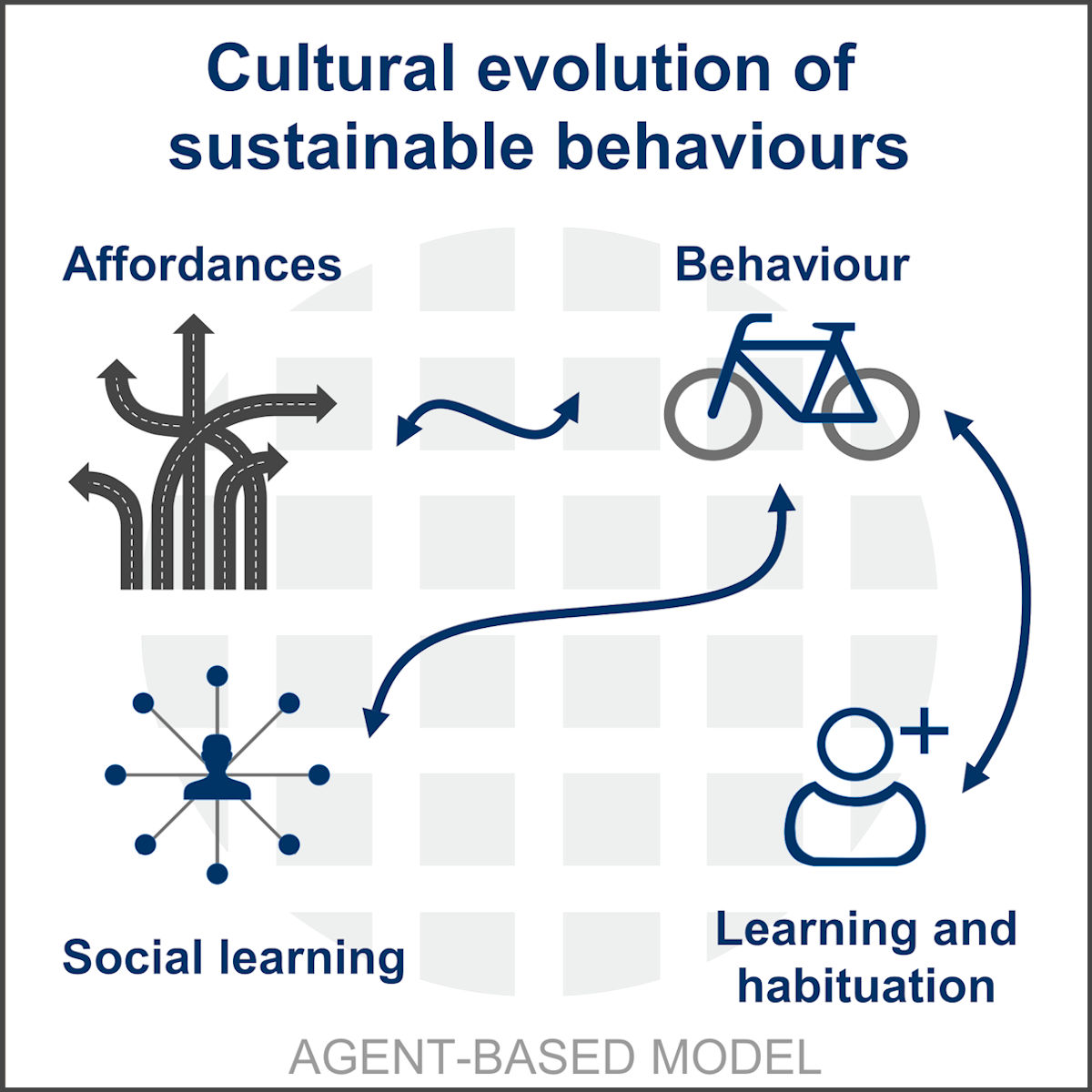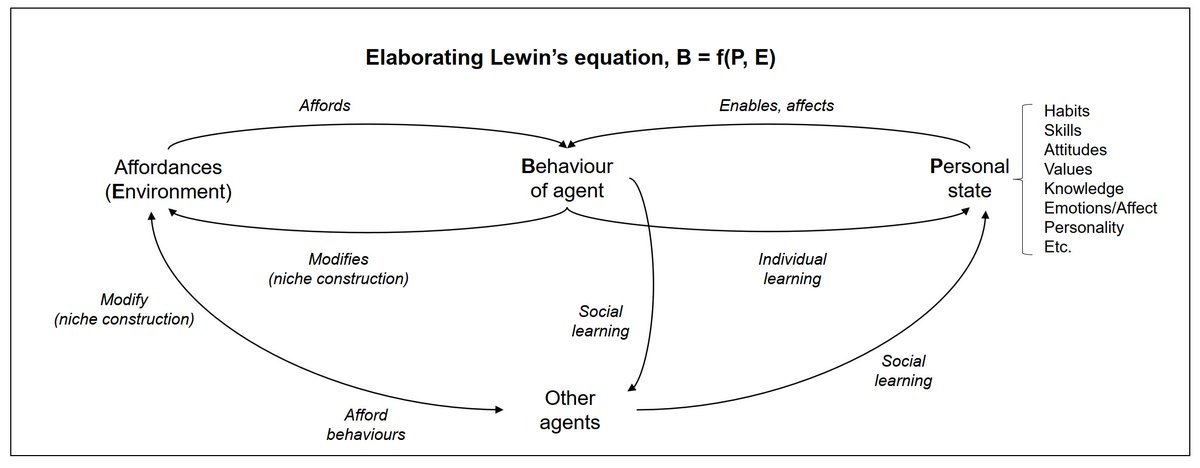Since these have proved to be useful & fun, hereu2019s a tweetorial on our new research project u201cCultural Evolution of Sustainable Behaviors: Pro-environmental Tipping Points in an Agent-Based Modelu201d published in @OneEarth_CP  https://abs.twimg.com/emoji/v2/... draggable="false" alt="ud83dudd13" title="Open lock" aria-label="Emoji: Open lock">& done at @IIASAVienna: (1/16)
https://abs.twimg.com/emoji/v2/... draggable="false" alt="ud83dudd13" title="Open lock" aria-label="Emoji: Open lock">& done at @IIASAVienna: (1/16)
https://www.cell.com/one-earth/fulltext/S2590-3322(20)30003-8">https://www.cell.com/one-earth...
https://www.cell.com/one-earth/fulltext/S2590-3322(20)30003-8">https://www.cell.com/one-earth...
The problem: Many of us have pro-environmental attitudes, values, awareness etc. But only a fraction of this u2018potentialu2019 is actualized, the rest of it is lost in the chasm known as the u2018attitudeu2013action gapu2019. Attitudes etc. don& #39;t translate directly into behaviour! (2/16)
The solution: Certainly a complex issue, but I am quite sure it has less to do with further increasing u2018awarenessu2019 or other individual traits and more to do with changing the environments and cultures u2013 the context u2013 we behave in. (3/16)
There are many ways to view this, but I tend to look at it this way: Behaviour is an emergent function of the Person and the Environment. In the 1930s, Kurt Lewin formalized this as B = f(P,E). This is a useful heuristic, but not quite precise enough for practice! (4/16)
So, how do patterns of collective behaviour emerge, more precisely, as a function of (social) persons and environments? We looked to several theories in behavioural science and cultural evolution for answers. We identify (at least) five key feedback-loops: (5/16)
1. The environment has u2018affordancesu2019, or opportunities for behaviour (e.g., bike lanes u2018affordu2019 cycling)
2. Behaviour alters personal states through processes of individual learning and habituation
3. Personal states, such as habits/intentions/attitudes, affect behaviour (6/16)
2. Behaviour alters personal states through processes of individual learning and habituation
3. Personal states, such as habits/intentions/attitudes, affect behaviour (6/16)
4. Behaviour alters the environment in non-random ways through cultural niche construction
5. Behaviour occurs in a social network and results in social learning/transmission
Thus, we have a conceptual model! The next step is to actually code these processes (not simple). (7/16)
5. Behaviour occurs in a social network and results in social learning/transmission
Thus, we have a conceptual model! The next step is to actually code these processes (not simple). (7/16)
Our method of choice is agent-based modelling (ABM). ABMs are used to model interactions between agents (e.g., humans) and agents, and agents and environments. The focus of ABMs is often to study how complex, unpredictable patterns emerge from simple interactions. (8/16)
In our ABM, agents move on a u2018landscape of affordancesu2019 u2013 a grid with various opportunities for behaviour. Depending on their personal states, agents interact with different affordances (i.e., behave). They can behave in pro-environmental or environmentally harmful ways. (9/16)
The ways in which agents behave has an effect on how other agents in their near social network behave (i.e., they learn socially). Our agents also develop habits and can construct their own environments to suit their & #39;needs& #39; better. (10/16)
The surprising part: Even slight changes (~5%) in the landscape of affordances have drastic effects on how u2018culturesu2019 of agents behave collectively. The system is particularly sensitive to the environment agents behave in (the u2018infrastructureu2019 of their world, if you may). (11/16)
We then move on to empirically validate the model. We use the case of the evolution of bicycling and driving patterns in Copenhagen: since the 1970s, there has been a rapidly accelerating share of cyclists. We show that our model can work in similar patterns. (12/16)
It turns out, even if we add pro-environmental affordances (e.g., cycling infrastructure) linearly to our system, the uptake of pro-environmental behaviours will be accelerating and nonlinear. In fact, this is arguably more or less also what happened in Copenhagen! (13/16)
So even linear increases in u2018opportunities for pro-environmental behaviouru2019 can lead to nonlinear uptake of pro-environmental behaviours. This is the real leverage point & take-home message: we need to make sustainable behaviours easy and the u2018path of least resistanceu2019. (14/16)
If we do this, we have a chance of reaching u2018tipping pointsu2019 in collective sustainable behaviour patterns. But we must understand that behaviours emerge systemically, as a product of social, environmental and individual factors. Too often we only focus on the latter. (15/16)
Afterthoughts (16/16): Modelling is hard work! A lot of work went to making all of this reproducible: model code ( @netlogo) is on @comses, analysis code on my GitHub. Even more went into sensitivity analyses & protocols. For these, see the extended PDF:
https://www.cell.com/one-earth/pdfExtended/S2590-3322(20)30003-8">https://www.cell.com/one-earth...
https://www.cell.com/one-earth/pdfExtended/S2590-3322(20)30003-8">https://www.cell.com/one-earth...

 Read on Twitter
Read on Twitter & done at @IIASAVienna: (1/16) https://www.cell.com/one-earth..." title="Since these have proved to be useful & fun, hereu2019s a tweetorial on our new research project u201cCultural Evolution of Sustainable Behaviors: Pro-environmental Tipping Points in an Agent-Based Modelu201d published in @OneEarth_CP https://abs.twimg.com/emoji/v2/... draggable="false" alt="ud83dudd13" title="Open lock" aria-label="Emoji: Open lock">& done at @IIASAVienna: (1/16) https://www.cell.com/one-earth..." class="img-responsive" style="max-width:100%;"/>
& done at @IIASAVienna: (1/16) https://www.cell.com/one-earth..." title="Since these have proved to be useful & fun, hereu2019s a tweetorial on our new research project u201cCultural Evolution of Sustainable Behaviors: Pro-environmental Tipping Points in an Agent-Based Modelu201d published in @OneEarth_CP https://abs.twimg.com/emoji/v2/... draggable="false" alt="ud83dudd13" title="Open lock" aria-label="Emoji: Open lock">& done at @IIASAVienna: (1/16) https://www.cell.com/one-earth..." class="img-responsive" style="max-width:100%;"/>




